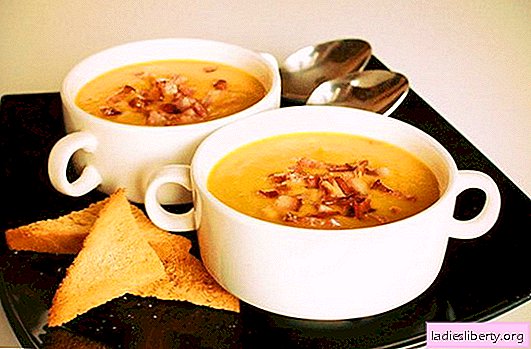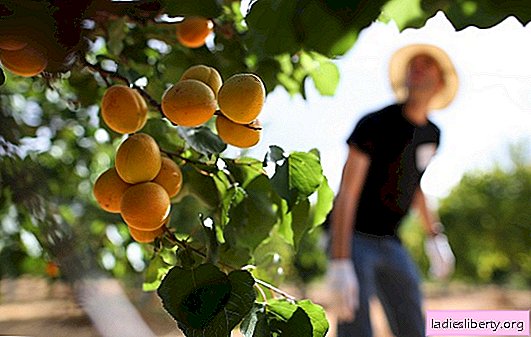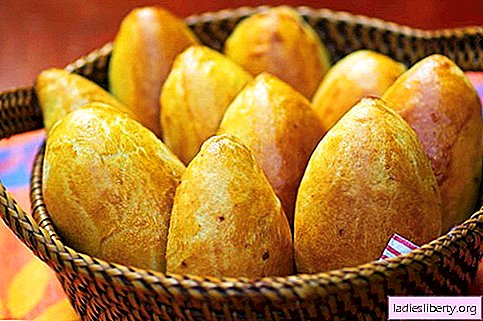
Many of us cannot imagine a regular meal without a loaf of fresh and fragrant bread. It has always been considered one of the most important foods in our diet, so there are many proverbs and sayings about its benefits.
Today on the shelves in bakeries and supermarkets there are a large number of different types and varieties of bread. Unfortunately, a lot of people refuse to use this product. They mistakenly believe that it is one of the main reasons for gaining excess weight.
We suggest determining which bread is the most healthy. And for this, you should familiarize yourself with its composition and properties of its ingredients in the most detail.
What is the most healthy bread made of?
When preparing dough for bread, three main components are used: water, flour, yeast. In order to diversify the basic composition of the product, significantly change or improve its taste, as well as make it more useful, various additives serve. Manufacturers use milk, eggs, salt, vegetable oils, natural starter cultures and other equally useful ingredients. And coriander, caraway seeds, malt, raisins, dried apricots and sunflower seeds are able to give special taste and piquancy to bread. But we will focus on three basic components.
Flour is an integral part of all bakery products and the quality of the product baked from it directly depends on its quality.
For some time, the highest grade flour was considered the most useful. Until nutritionists explained that it carries only simple carbohydrates into the body. Because during its production, cereal germ, bran, an aleuron layer of grain are removed from cereals. All these components are a storehouse of substances and elements necessary for the human body. Ultimately, the starchy part of the grain remains for the production of premium flour, which does not bring vitamins and nutrients to the body. From this we can conclude: bread contains the largest amount of trace elements and vitamins, if it is made from low-grade flour.
Therefore, bread that is made from wallpaper or peeled flour with the addition of whole or sprouted grain, as well as bran, can be considered the most useful. It contains a large amount of minerals, dietary fiber, fiber, B vitamins, vitamin E, albumin protein and other trace elements.
Another main ingredient in the preparation of many varieties of bread is yeast. They contain a large number of amino acids, B vitamins, minerals. Yeast bread contains glutamic acid. It is extremely necessary and important in the metabolic process. She also takes a direct part in the body's production of other amino acids. In this case, the body itself is not able to synthesize glutamic acid, and it needs to receive it in the process of nutrition. If the human body lacks glutamic acid, then its physical and mental performance decreases.
Water is a necessary and important component in the process of making bread dough, where it serves as a solvent. And its benefits have been known to us since childhood, because water is the basis of the body, participates in its metabolic processes and, of course, is necessary for the full functioning and vital functions.
Energy and nutritional value of bread products
The energy value of bread, like any other product, is based on its chemical composition. The amount of energy released by the body is directly dependent on the type of flour. The higher the grade of flour, the more energy is released by the body during assimilation, and vice versa. This dependence can be clearly seen, based on data on the energy value of one hundred grams of a bread product, depending on the type of flour from which it is made:
• Wallpaper wheat flour - 840kJ;
• Rye seeded flour - 894 kJ;
• Wheat flour of the highest grade - 972kJ;
• Butter products from premium flour - up to 1455kJ.
Bread contains one third of the protein, which is extremely important and necessary for our body. Coverage of the daily needs of the human body in vegetable protein can be achieved by almost 80% due to the use of bread.
Unfortunately, flour and bread with a simple recipe, low in fat. However, 200-250 grams of rye bread is enough to cover the daily needs of the body in 30% polyunsaturated fatty acids and 25% phospholipids.
In any bread product, carbohydrates prevail, and in an amount of about 50%. Therefore, with daily consumption of 200-250 grams of rye bread, the daily energy requirement of the body is covered by 40%. Non-digestible carbohydrates, such as fiber, are most valuable. Its digestion during digestion practically does not occur, but it has a beneficial effect on the intestines, enhancing its peristalsis, thereby contributing to cleansing.
Bread serves as a source of mineral elements for the human body. It contains a significant proportion of magnesium, phosphorus, potassium and manganese. In small quantities, it contains chlorine, cobalt, sodium and calcium. Bread is rich in vitamin E and B vitamins, the daily need of the body for them can be satisfied by 50% if you eat 200-250 grams of rye bread. Eating bread products, a person can almost completely cover the daily requirement of the body for iron. Also, about half of the required organic acids enter our body with bread. They are able to reduce the acidity of the digestive tract, activate its activity and improve the composition of microflora.
For a rational and balanced work of the body, nutritionists around the world recommend eating an average of about 150-250 g of rye bread daily.
The most useful types of bread and their effect on our body
The use of rye bread helps to eliminate toxins and carcinogens from the body, it is able to improve metabolism. Rye bread has a low energy value, so its use is recommended for those who monitor their weight. This type of bread has a beneficial effect on the functioning of the heart. It is useful to eat it for obesity, cancer, anemia and diabetes. For all these properties, rye bread undoubtedly deserves the title of the most wholesome.
Bread with bran should be used to strengthen immunity, with hypertension, difficulties with bowel movements, atherosclerosis. It contains nicotinic acid, which protects the body from the development of gastrointestinal diseases.
Yeast-free bread is recommended for eating with dysbiosis, stomach ulcers, intestines and gastritis. This type of bread is able to exert anti-inflammatory effects and normalize the functioning of the gastrointestinal tract.
Salt-free or achloride bread should be consumed in diseases of the heart and kidneys. And also in cases where doctors recommend limiting the intake of salt in the body.
Bread with the addition of germinated wheat germ is extremely useful because it is enriched with vitamins. It cleanses the body of toxins and neutralizes the effects of toxins. The use of such bread stimulates the function of blood formation and increases the level of hemoglobin in the blood.
The most healthy bread
Summing up, it should be noted that bread is a tasty, healthy and nutritious product. When choosing and using it, it is necessary to be based on individual preferences and recommendations. The most useful bread can be called rye black, it is slightly inferior to bread made from dark whole wheat flour.











